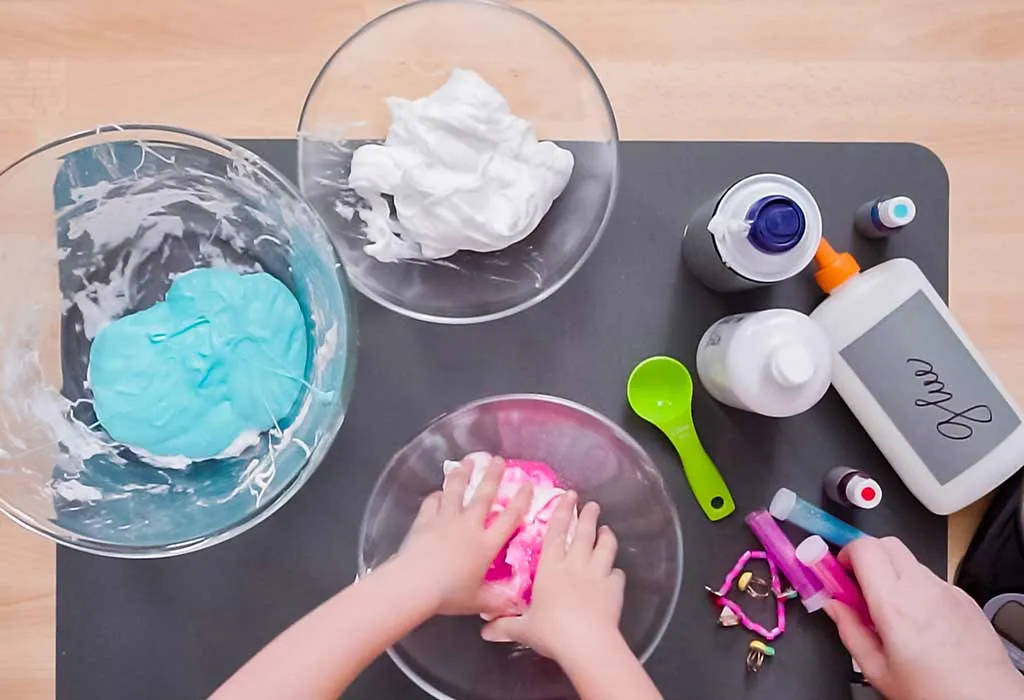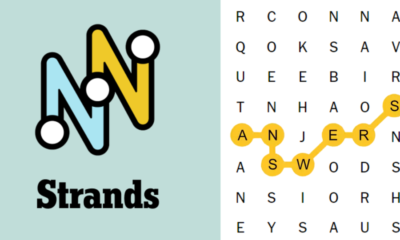Lifestyle
How to Make Slime: The Ultimate DIY Guide for Kids and Adults

Slime is more than just a fun toy—it’s a sensory experience, a stress reliever, and even a basic science project rolled into one. Whether you’re a parent looking for an engaging activity for your children, a teacher creating a hands-on learning lesson, or an adult needing a therapeutic creative outlet, learning how to make slime is both rewarding and surprisingly easy.
In this comprehensive guide, you’ll discover different slime recipes, tips for achieving perfect texture, ways to customize your slime, and troubleshooting advice to ensure success every time. So grab your ingredients and let’s get into the sticky, stretchy fun!
Why Slime is So Popular
Slime has become a viral trend across YouTube, TikTok, and Instagram, and for good reason. It’s colorful, tactile, and endlessly customizable. From glittery to glow-in-the-dark, from fluffy to crunchy, there’s a version of slime for every personality and mood.
Slime-making also bridges the worlds of fun and education. It teaches children about chemical reactions, polymers, and measurements in a playful way. For adults, making slime can provide a satisfying outlet for creativity and stress relief—almost like mindfulness in a bowl.
Essential Ingredients You’ll Need
Before we jump into different recipes, let’s go over the most commonly used ingredients in slime-making:
Core Ingredients
-
White school glue: This is the foundation of most slimes. Elmer’s glue is a popular choice.
-
Borax or saline solution: These act as the activator that gives the slime its elasticity.
-
Baking soda: Helps stabilize the texture when using contact lens solution.
-
Water: Used to adjust consistency.
Optional Add-ins
-
Food coloring: For bright, eye-catching colors.
-
Glitter: Adds sparkle and fun.
-
Foam beads or clay: For texture variety.
-
Scents or essential oils: To make the slime smell pleasant.
Basic Slime Recipe: The Classic Formula
This is the simplest and most widely used slime recipe, perfect for beginners.
Ingredients
-
1/2 cup white school glue
-
1/2 cup water
-
1/2 teaspoon baking soda
-
1 tablespoon contact lens solution (must contain boric acid)
-
Food coloring (optional)
Instructions
-
Mix the glue and water in a bowl until fully combined.
-
Add food coloring if desired.
-
Stir in baking soda until dissolved.
-
Slowly add the contact lens solution while stirring continuously.
-
The slime will begin to form. Knead it with your hands until it reaches your desired consistency.
-
Store in an airtight container to keep it fresh.
Fluffy Slime Recipe: Soft and Squishy
For a softer, marshmallow-like texture, fluffy slime is a fan favorite.
Ingredients
-
1/2 cup white school glue
-
3 cups shaving cream
-
1/2 teaspoon baking soda
-
1 tablespoon contact lens solution
-
Food coloring (optional)
Instructions
-
In a bowl, mix glue and shaving cream together.
-
Add food coloring for a pop of color.
-
Mix in baking soda.
-
Slowly add contact lens solution and stir.
-
Once it forms, knead the mixture until it’s fluffy and stretchable.
This kind of slime is great for sensory play and younger children because it’s less sticky.
How to Make Slime Without Borax
For those who want a safer, non-toxic option (especially for younger kids), here’s a borax-free alternative.
Ingredients
-
1/2 cup white glue
-
1/2 cup water
-
1/4 cup liquid starch (available in the laundry aisle)
-
Food coloring (optional)
Instructions
-
Combine glue and water in a bowl.
-
Add food coloring if desired.
-
Slowly stir in liquid starch while mixing.
-
As slime starts forming, knead it until smooth.
This method is safe and straightforward, making it a great choice for classrooms and younger audiences.
Crunchy Slime Recipe: Texture You Can Hear
If you love tactile and auditory stimulation, crunchy slime is for you.
Ingredients
-
1/2 cup glue
-
1/2 cup water
-
1/2 teaspoon baking soda
-
1 tablespoon contact lens solution
-
1/4 cup foam beads or plastic beads
-
Food coloring (optional)
Instructions
-
Mix glue and water in a bowl.
-
Add food coloring if using.
-
Stir in baking soda.
-
Add contact lens solution and mix until slime forms.
-
Fold in the foam beads to create that crunchy sensation.
The beads create a delightful crackle when the slime is squeezed, which is oddly satisfying.
Magnetic Slime: A Science Experiment
For a more advanced project, magnetic slime adds a scientific twist.
Ingredients
-
1/2 cup white glue
-
1/2 cup water
-
1 tablespoon iron oxide powder
-
1/2 teaspoon baking soda
-
1 tablespoon contact lens solution
-
Neodymium magnet
Instructions
-
Combine glue and water in a bowl.
-
Mix in iron oxide powder (wear gloves and mask if needed).
-
Stir in baking soda.
-
Add contact lens solution to form slime.
-
Use a magnet to move the slime around—it will follow the magnetic field!
This recipe doubles as a physics lesson and is ideal for science fairs or homeschool projects.
Troubleshooting Common Slime Problems
Even the most seasoned slime makers run into issues. Here’s how to fix common problems:
Slime is too sticky
-
Add a few drops of contact lens solution and knead again.
-
You can also add a bit more baking soda to firm it up.
Slime is too hard
-
Try adding a bit of warm water and kneading thoroughly.
-
Add more glue to soften.
Slime won’t form
-
Double-check that your contact lens solution contains boric acid or sodium borate, which are essential activators.
Storing and Caring for Your Slime
Slime lasts longer when stored properly. Keep your creation in an airtight container or ziplock bag when not in use. If it starts to dry out, add a tiny bit of water and knead it. Never store slime on fabric or carpet—it can leave a stain.
Also, wash your hands before and after playing to avoid transferring oils or bacteria to your slime.
Fun Slime Variations to Try
Once you master the basics, you can experiment with unique twists:
-
Glow-in-the-dark slime: Add glow pigment powder or glow-in-the-dark paint.
-
Scented slime: Use kid-safe essential oils like lavender or peppermint.
-
Galaxy slime: Mix dark blues, purples, and glitter for a cosmic look.
-
Butter slime: Mix in soft clay to make a buttery, moldable texture.
-
Slime kits: Pre-packaged kits offer convenience and reduce mess.
The options are virtually endless once you know how to make slime in its basic form.
Is Slime Safe?
Generally, yes—especially if you use non-toxic glue and follow proper recipes. However, it’s important to supervise young children and make sure they don’t put slime in their mouths. Avoid borax if you have sensitive skin or allergies and always wash hands afterward.
If you’re worried about chemical exposure, choose borax-free recipes or use natural glue options.
Educational Benefits of Slime Making
Making slime is more than just a craft—it’s a STEAM (Science, Technology, Engineering, Arts, and Mathematics) activity. Children can learn:
-
Science: Understanding polymers and viscosity.
-
Math: Measuring and ratios.
-
Creativity: Customizing colors and textures.
-
Responsibility: Caring for their slime and workspace.
It’s an excellent rainy-day activity that’s also educational.
Hosting a Slime Party
Want to take it up a notch? Host a slime-making party! Provide various colors, glitters, and mix-ins so guests can create their own custom slimes. Use disposable tablecloths and provide containers for guests to take their creations home.
Slime parties are popular for birthdays, classroom fun days, or family get-togethers—and they’re easy to organize with a little preparation.
Conclusion: A Sticky Hobby Worth the Hype
Now that you know how to make slime, you’ve unlocked a world of sensory fun, creativity, and hands-on science. Whether you’re making it with your kids, hosting a party, or simply relieving stress with a satisfying squish, slime-making is a DIY craft that brings joy to all ages.
The beauty of slime is that there’s no limit to how you can personalize it. As long as you have glue, a bit of activator, and an open mind, you’re ready to create magic in your hands. So go ahead—gather your ingredients, roll up your sleeves, and enjoy the squishy, stretchy journey of slime creation.

Lifestyle
Nerovet AI Dental: Transforming Modern Dentistry with AI

Nerovet AI Dental: The Future of Intelligent Dentistry
The dental industry is undergoing a technological revolution, and artificial intelligence (AI) is at the heart of it. From diagnostics to treatment planning, AI is enhancing accuracy, reducing human error, and improving patient experiences. Among the most innovative solutions shaping this transformation is nerovet ai dental, a cutting-edge platform designed to redefine how dentists approach oral healthcare.
Dentistry has traditionally relied on the skill and expertise of practitioners, but the integration of AI introduces a new level of precision. Patients benefit from faster, safer, and more effective treatments, while dental professionals gain tools that support them in making informed decisions. This combination of human expertise with machine intelligence is changing the future of oral care.
What is Nerovet AI Dental?
Nerovet AI Dental is a state-of-the-art artificial intelligence solution tailored specifically for dental practices. Unlike generic AI platforms, it is built to handle the complexities of oral healthcare, from identifying cavities on X-rays to creating personalized treatment plans. Its algorithms are trained on vast amounts of dental data, enabling it to recognize patterns that might be overlooked by the human eye.
This system is not meant to replace dentists but to empower them. By analyzing dental scans, patient histories, and treatment outcomes, it provides actionable insights that guide practitioners in delivering optimal care. For patients, it means fewer errors, early detection of dental diseases, and a smoother clinical experience.
How AI is Transforming Dentistry
Artificial intelligence has already made waves in medicine, but its influence in dentistry is equally groundbreaking. Here’s how solutions like nerovet ai dental are revolutionizing the field:
1. Early Detection of Oral Diseases
AI tools can scan digital X-rays and identify early signs of cavities, gum disease, or even oral cancers that may not be visible to the naked eye. Early detection is vital in preventing long-term damage.
2. Personalized Treatment Plans
Every patient’s dental structure and health history are unique. AI evaluates this data to suggest tailored treatment options, ensuring greater success rates and patient satisfaction.
3. Predictive Analytics
By studying trends in dental conditions, AI can predict future risks. For instance, if a patient shows early signs of gum disease, AI may recommend preventive measures before the condition worsens.
4. Enhanced Patient Communication
Many patients fear dental treatments due to lack of understanding. AI-powered visuals and simulations can show patients what their treatment will look like, reducing anxiety and building trust.
Benefits of Using Nerovet AI Dental
Dental practices adopting nerovet ai dental are experiencing significant improvements across multiple areas. Here are some of the standout benefits:
Accuracy and Precision
Dentists can miss subtle signs of disease, especially when analyzing complex X-rays. Nerovet’s AI algorithms ensure that nothing goes unnoticed, leading to better diagnoses.
Time Efficiency
What could take a human dentist several minutes—or even hours—can be done by AI in seconds. This accelerates workflows and allows dentists to focus on direct patient care.
Cost-Effectiveness
By streamlining processes and minimizing errors, AI reduces unnecessary treatments and lowers overall costs for both clinics and patients.
Continuous Learning
Unlike static systems, AI platforms continuously learn from new data, improving their accuracy and expanding their capabilities over time.
The Role of AI in Dental Imaging
Dental imaging is one of the areas most positively impacted by AI. High-resolution digital X-rays and 3D scans are now analyzed with greater precision thanks to intelligent systems like nerovet ai dental.
AI-powered imaging allows practitioners to:
-
Detect hidden cavities between teeth.
-
Identify bone density issues for implant planning.
-
Spot early signs of orthodontic misalignments.
-
Highlight abnormalities that may indicate oral cancer.
This level of precision ensures patients receive accurate diagnoses and timely interventions, which can be life-changing.
Challenges and Ethical Considerations
While the advantages are compelling, integrating AI into dentistry also raises important challenges.
-
Data Privacy: Dental records are sensitive medical data, and ensuring their security is crucial.
-
Over-Reliance on Technology: AI should assist, not replace, the clinical judgment of dentists. Human oversight remains essential.
-
Accessibility: Advanced AI systems can be costly, making them less accessible to small dental practices in underserved areas.
Balancing innovation with ethical considerations is key to ensuring that AI benefits all stakeholders in dentistry.
The Patient’s Perspective
From the patient’s point of view, the introduction of nerovet ai dental brings several reassuring changes. Appointments become faster, diagnoses more reliable, and treatments more predictable. Patients can also access visual simulations of their dental health, making it easier to understand the necessity of certain treatments.
For many, the fear of dental visits stems from uncertainty. With AI-driven insights, patients gain confidence, knowing that their care is backed by advanced technology working alongside their dentist’s expertise.
Future of AI in Dentistry
The journey of AI in dentistry is only beginning. As technology continues to evolve, platforms like nerovet ai dental will expand their capabilities. Some future possibilities include:
-
Robotics in Dental Surgery: AI-guided robotic tools may soon perform complex surgeries with unparalleled precision.
-
Virtual Dental Assistants: Chatbots powered by AI could handle patient inquiries, appointment bookings, and aftercare instructions.
-
Integration with Wearables: Smart devices may monitor oral health in real time, alerting both patients and dentists to potential issues.
-
Global Access: As AI becomes more affordable, even remote communities could gain access to advanced dental care.
These developments highlight a future where dental care is more accurate, accessible, and personalized than ever before.
Why Dental Professionals Should Embrace AI
Some practitioners remain skeptical of AI in dentistry, fearing it might overshadow their role. However, the reality is quite the opposite. AI complements human expertise by removing guesswork and enhancing decision-making. By embracing solutions like nerovet ai dental, dentists can:
-
Increase patient trust and satisfaction.
-
Reduce misdiagnoses and malpractice risks.
-
Save valuable time for complex procedures.
-
Stay competitive in an increasingly tech-driven healthcare market.
Adopting AI is no longer optional; it is becoming a necessity for modern dental practices.
Conclusion
The fusion of dentistry and artificial intelligence marks a turning point in oral healthcare. Platforms such as nerovet ai dental are leading the charge, providing unparalleled accuracy, efficiency, and patient satisfaction. By supporting dentists in diagnostics, treatment planning, and patient communication, AI ensures a future where oral care is smarter, safer, and more effective.
While challenges remain, the potential far outweighs the risks. For dental professionals, embracing AI means staying at the forefront of innovation. For patients, it promises a future where dental visits are less daunting and more reliable.
In the end, nerovet ai dental represents more than just a technological tool—it embodies the next chapter of intelligent dentistry.
Lifestyle
Rowdy Oxford Integris | History, Culture & Modern Identity

Rowdy Oxford Integris: Exploring Tradition, Culture, and Identity
The term rowdy oxford integris may sound unusual at first, but it represents a fascinating intersection of tradition, modern innovation, and cultural dynamism. To truly appreciate this concept, one must look deeper into its layers—history, lifestyle, intellectual influence, and the evolving modern identity attached to it. Like Oxford’s centuries-old reputation for academic brilliance, this idea captures both the raw, “rowdy” energy of vibrant communities and the integrative (“integris”) spirit of unity and adaptation.
In this article, we will explore the meaning, background, and broader cultural significance of rowdy oxford integris. From its roots in academia and social vibrance to its role in today’s global identity, the journey unfolds as both inspiring and thought-provoking.
The Essence of Rowdy Oxford Integris
Rowdy Oxford Integris combines two powerful elements—“rowdy,” symbolizing youthful energy, vibrance, and cultural intensity, and “integris,” highlighting integrity, unity, and integration. When placed within the framework of Oxford, one of the most influential hubs of knowledge in history, this concept paints a picture of tradition meeting innovation, seriousness merging with playfulness, and identity being shaped through contrasts.
This duality mirrors life itself: the tension between discipline and rebellion, structure and creativity, individuality and community. Understanding rowdy oxford integris helps us appreciate how culture, education, and identity continue to evolve.
Historical Foundations
Oxford has long been known as a city of intellect, producing scholars, leaders, and innovators. But alongside its prestige, it has also been a place where youthful vibrance and cultural energy thrive. Taverns, student societies, and rebellious movements were often as important to shaping its history as formal classrooms and lectures.
The “rowdy” aspect of Oxford culture is not about chaos but about breaking boundaries. Students throughout centuries engaged in heated debates, pushed against traditional norms, and carved paths toward progressive thought. Meanwhile, “integris” emphasizes how these disruptive energies eventually blended into Oxford’s larger cultural framework, creating harmony between past and present.
Cultural Identity and Expression
Cultural identity plays a crucial role in shaping the meaning of rowdy oxford integris. Oxford is not just a place of books and lectures; it is a living city filled with art, music, sports, and social traditions. Festivals, student clubs, and street activities reflect the “rowdy” energy, while the values of respect, intellectual integrity, and cultural preservation reflect “integris.”
This balance creates a unique cultural ecosystem where tradition is respected, yet innovation is celebrated. For locals and students alike, it means embracing diversity, maintaining integrity, and allowing vibrant cultural expressions to thrive.
Modern Interpretations
Today, rowdy oxford integris extends beyond physical boundaries. With globalization, digital culture, and worldwide academic exchange, the concept reflects how modern communities combine lively youth culture with responsibility and intellectual integrity.
Universities across the world now embody this spirit: encouraging freedom of thought, creativity, and bold experimentation, while ensuring strong foundations of ethics and knowledge. The “rowdy” element resonates with students’ drive to innovate and challenge, while “integris” ensures stability and cohesion.
This modern identity is also seen in social media, where the Oxford lifestyle is celebrated through fashion, literature, and cultural commentary. The balance between rowdy dynamism and integrative responsibility continues to shape global academic and social communities.
Symbolism and Deeper Meaning
The symbolic layers of rowdy oxford integris reveal lessons that apply to education, society, and personal growth.
-
Balance of Duality – Life often demands a mix of energy and discipline, just as Oxford thrives on both playful vibrance and deep intellectual seriousness.
-
Integration of Tradition and Innovation – Respecting traditions while embracing new ideas is at the heart of progress.
-
Cultural Fusion – A society that blends creativity and integrity becomes more resilient and inclusive.
-
Personal Identity – Individuals too can embody this concept, finding harmony between their energetic, ambitious side and their grounded, ethical self.
Everyday Relevance
While rowdy oxford integris is rooted in a specific cultural context, its relevance stretches into everyday life. In workplaces, it encourages innovation while maintaining professional integrity. In education, it inspires curiosity while holding onto academic honesty. In communities, it fosters diversity while ensuring unity.
People who understand this balance often find themselves better equipped to lead, create, and adapt. The idea teaches that one can be bold yet respectful, disruptive yet constructive, independent yet integrated into a larger community.
Why It Resonates with the Modern World
The modern world is full of contrasts: tradition versus technology, freedom versus regulation, individuality versus collectivism. Rowdy oxford integris captures this tension and offers a way to harmonize it. It reflects the need for both excitement and responsibility in shaping a progressive yet stable society.
Students, thinkers, and communities worldwide resonate with this idea because it symbolizes growth through balance. It encourages breaking barriers while holding onto principles—a message more important today than ever.
The Future of Rowdy Oxford Integris
Looking ahead, rowdy oxford integris will likely continue to evolve. With changing times, its meaning may adapt to reflect new challenges such as digital transformation, cultural globalization, and generational shifts. However, the essence—balancing vibrancy with integrity—will remain constant.
Future generations may reinterpret this concept in new forms, perhaps in technology-driven societies, global academic hubs, or even virtual communities. Yet, the harmony between energy and ethics will always remain its core.
Conclusion
Rowdy Oxford Integris is more than a phrase—it is a philosophy of life, culture, and identity. Rooted in history yet thriving in the present, it reflects how energy, creativity, and vibrance can exist alongside respect, responsibility, and unity.
By embracing both the “rowdy” and the “integris” elements, communities and individuals alike can create balance, foster innovation, and preserve values. In a world of constant change, this unique harmony reminds us that true growth comes not from choosing one side but from blending them both.
The legacy of rowdy oxford integris will continue to inspire generations—encouraging us to be bold yet responsible, innovative yet grounded, and vibrant yet unified.
Lifestyle
Dan Blocker Wife Death – Die ganze Wahrheit enthüllt

Dan Blocker Wife Death – Ein Blick hinter die Kulissen einer tragischen Geschichte
Die Geschichte von Dan Blocker Wife Death ist für viele Fans des Schauspielers ein Rätsel geblieben. Während Dan Blocker durch seine Rolle als Hoss Cartwright in der legendären Western-Serie Bonanza weltberühmt wurde, blieb seine Familie weitgehend im Hintergrund. Besonders das Schicksal seiner Ehefrau, Dolphia Lee Parker, bewegt bis heute viele Menschen.
Dieser Artikel beleuchtet nicht nur den Mythos um die Todesumstände von Dan Blockers Frau, sondern wirft auch einen Blick auf die gemeinsame Ehe, die Kinder und das Leben nach dem plötzlichen Verlust des beliebten Schauspielers.
Wer war Dan Blocker?
Bevor wir auf das Thema eingehen, lohnt sich ein kurzer Rückblick auf Dan Blockers beeindruckendes Leben. Geboren am 10. Dezember 1928 in De Kalb, Texas, wuchs er in einfachen Verhältnissen auf. Mit seiner imposanten Statur von über 1,90 Metern war Blocker von Natur aus ein auffälliger Mann.
Nach dem Militärdienst im Koreakrieg studierte er Schauspiel und Pädagogik. Seinen internationalen Durchbruch schaffte er 1959 mit der Rolle des sanften, aber starken Hoss Cartwright in Bonanza. Die Serie wurde zu einem Meilenstein des amerikanischen Fernsehens und machte Blocker zu einem der beliebtesten Stars seiner Zeit.
Die Liebe seines Lebens: Dolphia Lee Parker
Dan Blocker lernte seine spätere Ehefrau, Dolphia Lee Parker, während seiner Studienzeit an der Sul Ross State University in Texas kennen. Beide verband eine tiefe Zuneigung, die in einer stabilen und dauerhaften Ehe mündete. 1952 heirateten sie, und ihre Beziehung hielt bis zu Blockers Tod im Jahr 1972.
Gemeinsam bekam das Paar vier Kinder: Dirk, David, Debra Lee und Danna Lynn. Dirk Blocker wurde später selbst Schauspieler und ist vor allem durch seine Rolle in der Serie Brooklyn Nine-Nine bekannt. David Blocker machte sich als erfolgreicher Filmproduzent einen Namen.
Der plötzliche Tod von Dan Blocker
Im Mai 1972 traf die Familie ein schwerer Schicksalsschlag: Dan Blocker starb im Alter von nur 43 Jahren nach einer Gallenblasenoperation an einer Lungenembolie. Sein Tod kam völlig unerwartet und hinterließ sowohl in Hollywood als auch in seiner Familie ein großes Loch.
Die Serie Bonanza, die zu diesem Zeitpunkt auf dem Höhepunkt ihres Erfolges stand, musste plötzlich ohne einen ihrer Hauptcharaktere auskommen. Millionen Fans trauerten, und für Dolphia und die Kinder brach die Welt zusammen.
Dan Blocker Wife Death – Was geschah mit Dolphia?
Hier kommen wir zu der zentralen Frage: Dan Blocker Wife Death. Viele Gerüchte rankten sich über die Jahre um das Schicksal von Dolphia Lee Parker. Manche Quellen behaupteten, sie sei kurz nach dem Tod ihres Mannes ebenfalls verstorben, andere wiederum berichteten, sie habe ein zurückgezogenes Leben geführt.
Tatsächlich entschied sich Dolphia nach dem Tod ihres Ehemannes, vollständig aus der Öffentlichkeit zu verschwinden. Sie lebte für ihre Kinder und hielt sich bewusst fern von Hollywood und den Medien. Ihr Rückzug war für viele Fans Grund für Spekulationen, die über die Jahre wuchsen.
Entgegen mancher Annahmen ist Dolphia jedoch nicht unmittelbar nach Dan Blocker gestorben. Vielmehr führte sie ein sehr privates Leben, das bis heute kaum dokumentiert ist. Ihre genauen Lebensdaten oder ein offizielles Todesdatum sind nie bestätigt worden. Diese Geheimhaltung hat die Legende um die sogenannte Dan Blocker Wife Death-Geschichte noch verstärkt.
Die Kinder von Dan und Dolphia Blocker
Die Kinder spielten eine wichtige Rolle im Weiterleben von Dolphia.
-
Dirk Blocker: Schauspieler, bekannt aus Serien wie Brooklyn Nine-Nine.
-
David Blocker: Erfolgreicher Filmproduzent, unter anderem Gewinner eines Emmy Awards.
-
Debra Lee und Danna Lynn: Über sie ist weniger bekannt, da sie sich für ein Leben abseits der Öffentlichkeit entschieden.
Dolphia konzentrierte sich nach Dan Blockers Tod vor allem auf die Erziehung ihrer Kinder und darauf, ihnen Stabilität zu geben.
Warum gibt es so viele Gerüchte?
Die zahlreichen Spekulationen über Dan Blocker Wife Death haben verschiedene Ursachen. Einerseits liegt es an der enormen Popularität von Dan Blocker selbst. Fans, die tief mit seiner Rolle Hoss Cartwright verbunden waren, wollten auch nach seinem Tod jede mögliche Information über seine Familie erfahren.
Andererseits spielte Dolphias Rückzug aus der Öffentlichkeit eine große Rolle. Da sie keine Interviews gab, keine Auftritte hatte und bewusst aus der medialen Wahrnehmung verschwand, füllten sich die Lücken mit Vermutungen und Mythen.
In einer Zeit ohne Internet und soziale Medien verbreiteten sich Gerüchte schnell und hielten sich hartnäckig. Bis heute gibt es keine klaren, offiziellen Informationen über ihr weiteres Leben oder ihren Tod.
Das Vermächtnis von Dan Blocker und seiner Frau
Auch wenn die Details um Dan Blocker Wife Death unklar bleiben, so ist das Vermächtnis von Dan und Dolphia Blocker unbestreitbar. Gemeinsam gründeten sie eine Familie, die bis heute in der Film- und Fernsehbranche wirkt.
Dan Blockers Rolle als Hoss Cartwright bleibt unvergessen. Sein freundliches, sanftmütiges Auftreten machte ihn zu einer Kultfigur im Western-Genre. Auch sein früher Tod hat dazu beigetragen, dass er bis heute als Legende gilt.
Dolphias Entscheidung, im Schatten zu bleiben, zeigt eine andere Art von Stärke – die Kraft, Privatsphäre zu bewahren, die Familie zusammenzuhalten und ein normales Leben trotz des Rampenlichts zu führen.
Interessante Fakten rund um Dan und Dolphia Blocker
-
Dan Blocker besaß ein Restaurant in Kalifornien namens „Bonanza Steakhouse“, das er parallel zur Serie betrieb.
-
Trotz seiner Größe und seines kräftigen Körpers galt er als äußerst sanft und humorvoll.
-
Dolphia unterstützte ihren Mann während seiner gesamten Karriere, trat jedoch nie selbst in die Öffentlichkeit.
-
Nach Dan Blockers Tod entschieden die Produzenten von Bonanza, seine Figur Hoss nicht neu zu besetzen, sondern in der Serie sterben zu lassen – ein damals ungewöhnlicher Schritt.
Warum die Geschichte bis heute fasziniert
Die Faszination um Dan Blocker Wife Death zeigt, wie sehr Menschen nicht nur an Stars, sondern auch an deren Familien interessiert sind. Die Mischung aus Tragödie, Geheimnis und Legendenbildung macht diese Geschichte bis heute spannend.
Besonders die Tatsache, dass Dolphia konsequent ein Leben außerhalb des Rampenlichts wählte, verstärkt die Neugier. Für Fans, die Dan Blocker durch Bonanza kannten, bleibt die Frage nach dem Schicksal seiner Frau eine offene Wunde, die nie vollständig geheilt wurde.
Schlussgedanken
Die Geschichte von Dan und Dolphia Blocker ist eine Mischung aus Liebe, Ruhm, Verlust und Geheimnis. Während Dan Blocker durch Bonanza unsterblich wurde, bleibt die Erinnerung an seine Frau vor allem durch die Fragen und Gerüchte rund um Dan Blocker Wife Death lebendig.
Ihre Zurückhaltung mag viele Fragen unbeantwortet lassen, doch vielleicht liegt genau darin die Würde und Stärke von Dolphia Lee Parker. Statt sich im Rampenlicht zu verlieren, entschied sie sich, im Privaten für ihre Familie da zu sein.
So bleibt das Vermächtnis der Blockers nicht nur auf der Leinwand, sondern auch in der Inspiration, wie man mit Verlust, Ruhm und Privatsphäre umgehen kann.
-

 Nature4 months ago
Nature4 months agoFascinating World of Facts: A Journey Through Datos Curiosos
-

 Entertainment5 months ago
Entertainment5 months agoUnderstanding Basketball Zero Codes: A Complete Guide
-

 Entertainment5 months ago
Entertainment5 months agoStrands NYT: Unraveling the Digital Threads of a New Online Trend
-

 Business3 months ago
Business3 months agoWho Is Alex Karp Wife? Private Life of Palantir CEO
-

 Celebrity4 months ago
Celebrity4 months agoWho Is Drew Pritchard New Wife? Inside the Antique Star’s Private Love Life
-

 Business3 months ago
Business3 months agoRahki Giovanni Net Worth: Income, Fitness, and Success
-

 Entertainment5 months ago
Entertainment5 months agoGoogle Block Breaker: A Modern Tribute to Classic Arcade Fun
-

 News5 months ago
News5 months agoTrump Teacher Training Grants Freeze: Impact, Controversy, and What It Means for Education



